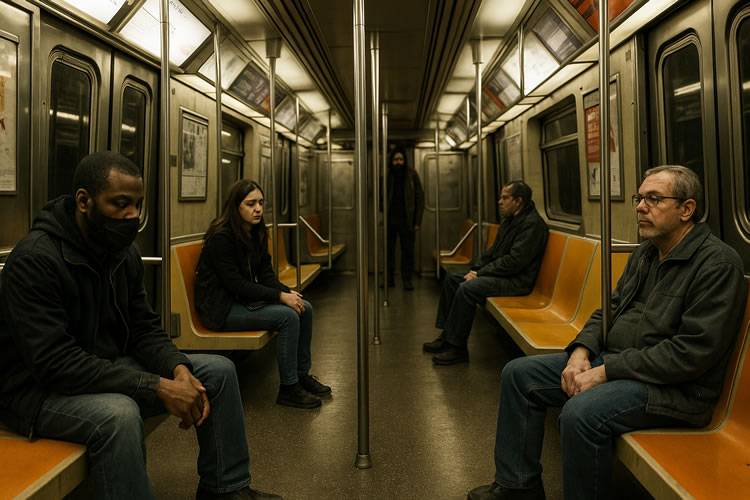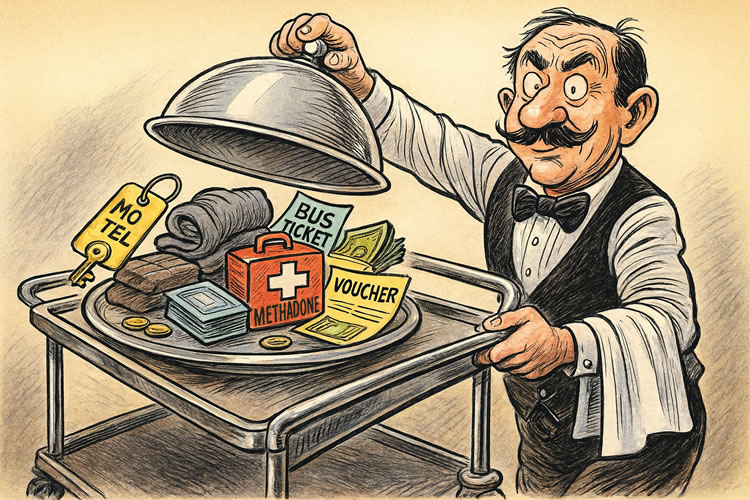On August 22nd, on a train in North Carolina, Iryna Zarutska, a young Ukrainian refugee, was fatally stabbed in a brutal attack that was caught on video — a harrowing act of violence that has since haunted the public consciousness. Her death struck not just as an isolated tragedy, but as a grim illustration of a broader truth: no matter how efficient or well-designed our cities or transit systems might be, they are hollow shells if people don’t feel safe using them.
Urban planners and policy advocates love to tout “walkable cities” and “15-minute neighborhoods” — communities where everything you need, from groceries to work to entertainment, is within a short walk or bike ride. The idea sounds ideal: less car dependence, lower emissions, healthier citizens, more vibrant public spaces.
But there’s a fundamental flaw in the way the concept is often sold: it assumes people want to walk. In reality, walking is a behavioral choice, not a zoning outcome. And nothing deters walking faster than fear. A city can have perfect sidewalks and mixed-use density, but if it’s perceived as dangerous — “stabby,” “shooty,” or just plain unsafe — people will stay indoors or get back in their cars.
Walkability on Paper vs. Walkability in Practice
A “walkable” city isn’t just one with crosswalks and corner cafés. It’s one where you want to walk — and that hinges on whether you feel you can do so safely.
Take San Francisco’s Tenderloin district. It’s one of the most densely populated, mixed-use areas in America, with high walkability scores. Yet residents and visitors alike avoid it after dark, citing rampant drug use, theft, and violence. The same holds true for parts of downtown Albuquerque, New Mexico, and inner Detroit — neighborhoods built for pedestrians but effectively abandoned by them.
Even the data supports this disconnect. A 2023 Oxford University study titled “Unintended Consequences? The Effects of Neighbourhood Walkability on Crime in Nine US Cities” found that higher walkability sometimes correlates with higher crime. The reason: more activity and density can create more “targets” or opportunities for theft and assault if policing and social order don’t keep pace. In other words, design alone doesn’t ensure safety — governance does.
“Fix Crime First, Walkability Follows”
For all the talk about “urban design,” it’s crime prevention and law enforcement that make walkability real. Clean, safe streets attract pedestrians naturally; nobody needs to be coaxed into walking in places where they feel secure. Conversely, when sidewalks become open-air drug markets or parks turn into encampments, walkability collapses, no matter how wide the sidewalks or how many mixed-use units planners zone in.
The formula isn’t complicated:
- Non-criminal city → people walk freely.
- Criminal city → people retreat, drive, and isolate.
That’s the missing variable in much of today’s urban planning discourse — a preference for design aesthetics over human psychology. People instinctively avoid danger. The more dangerous a place feels, the less its infrastructure matters.
🍁 Make a One-Time Contribution — Stand Up for Accountability in Vermont 🍁
The Transit Parallel
The same logic applies to public transportation. You can make it cheap, efficient, and environmentally friendly — but if it feels unsafe, ridership will crater.
The horrific stabbing of a young woman in North Carolina this fall highlights this reality. Public transport advocates often dismiss such incidents as “outliers,” but they shape public perception in powerful ways. One viral video or local headline can undo millions of dollars in marketing campaigns about “sustainable mobility.”
This isn’t new. In major U.S. cities, transit systems are struggling not because of fare hikes or route cuts, but because people feel unsafe.
- New York City: Despite billions invested in subway improvements, post-pandemic ridership remains roughly 70% of pre-2020 levels. Surveys by the MTA show that safety concerns — particularly violent incidents and harassment — are the top deterrents.
- San Francisco’s BART: Once a model of regional transit, it now runs at about 40% of pre-pandemic ridership. Riders cite open drug use, unpredictable behavior, and crime as reasons for avoiding it.
- Los Angeles Metro: LA has spent decades promoting “transit-oriented development,” but studies show fear and safety concerns, not scheduling, are the biggest barriers to broader ridership.
In all three cases, public infrastructure is there. The problem is trust.
Fear Trumps Planning
Urbanists often emphasize form — zoning, density, transit corridors — but neglect function: how real people behave. The uncomfortable truth is that you can’t engineer away fear. You have to reduce the causes of it.
When people describe an area as “sketchy,” “unsafe,” or “stabby,” they’re signaling a breakdown of the social contract. Whether it’s open-air crime, mental-health crises, or lack of policing, these are signals that civil order isn’t being maintained. No one wants to walk or ride in a city that feels on edge.
Data backs this up. A 2021 report, Safety For All, from the TransitCenter advocacy group found that perceived safety was the strongest predictor of whether people used buses and trains — stronger than price, frequency, or speed. Likewise, urban sociologists have long documented the “broken windows effect,” where visible disorder (graffiti, public drug use, aggressive panhandling) signals deeper lawlessness and drives out normal activity.
The Path Forward
Cities serious about sustainability, density, and transit must start with security. Safety isn’t an optional feature of urban life — it’s the foundation. Without it, even the most forward-thinking design remains hollow.
That means investing in policing, enforcement, and basic order before (not after) layering in bike lanes and light rail. It means measuring a city’s “walkability” not just by distance to coffee shops but by whether parents feel safe letting their kids walk there. It also means recognizing that infrastructure can’t compensate for fear — only safety can.
Walkable cities and functional public transit are noble goals. But before we can have a “15-minute city,” we need a non-criminal city. A non-stabby, non-shooty, non-nutbaggy city. Once people feel safe again, the walking — and the riding — will take care of itself.
Dave Soulia | FYIVT
You can find FYIVT on YouTube | X(Twitter) | Facebook | Instagram
#fyivt #publicsafety #urbanpolicy #walkablecities
Support Us for as Little as $5 – Get In The Fight!!
Make a Big Impact with $25/month—Become a Premium Supporter!
Join the Top Tier of Supporters with $50/month—Become a SUPER Supporter!









Leave a Reply